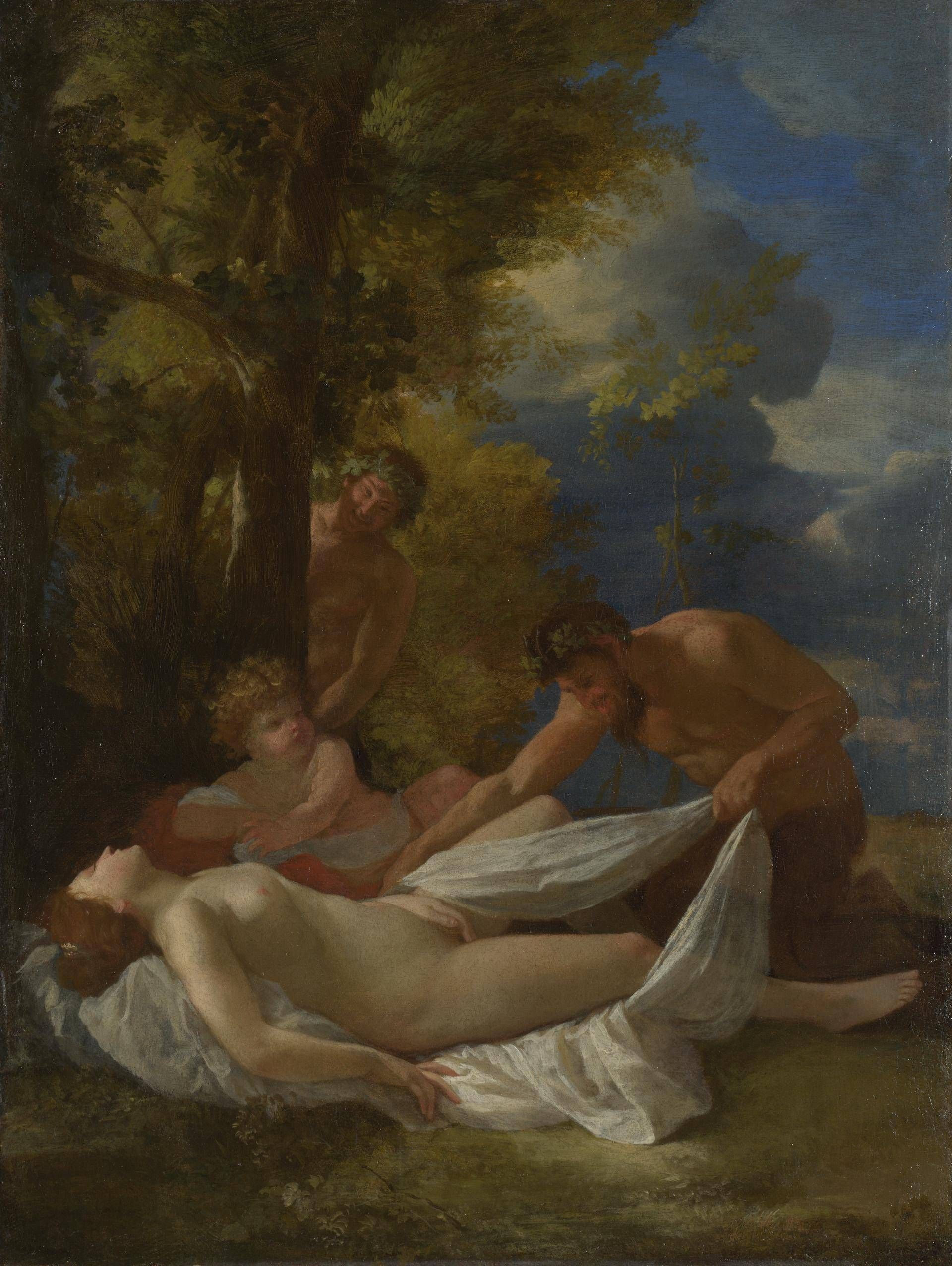
Nymph with Satyrs
A nymph lying in the foreground seems to be asleep, although her pose suggests that she is enjoying a solitary moment of ecstasy which is about to be interrupted. Beside her a golden-haired child watches as a satyr gently removes her delicate white robe. Another satyr peeps from behind a tree, smiling mischievously. In ancient Roman art, satyrs are represented as lustful, drunken woodland gods and companions of the god of wine Bacchus. The woman's pale skin, soft curves and rosy cheeks contrast with the tanned skins and muscular bodies of the satyrs.
This erotic painting was previously been thought to depict the story of Jupiter and the nymph Antiope. According to Roman mythology, in one of his earthly adventures Jupiter disguised himself as a satyr, crept up on the nymph Antiope and ravished her. But in Ovid's version of the story Antiope is not asleep (Metamorphoses, VI: 110-11).
Alternatively, the nymph could be Venus, goddess of love, but we cannot see any of her attributes in this painting. An earlier version of this subject (now in the Kunsthaus, Zürich) painted by Poussin shows a pair of white doves, which are associated with Venus and symbolise lust. The child could be Venus' son, Cupid, whose quiver, or bag, holding his arrows hangs in the tree above him in the Zürich picture.
Paintings of female nudes were made popular by the sixteenth-century Italian artists who were admired by Poussin and his patrons. Poussin may well have been inspired by their work: Agostino Carracci's print of a Satyr and Nymph shows the satyr behind the tree masturbating, which may also be happening in Poussin's painting. In both compositions, the tree in front of the satyr has a phallic appearance.
Painted in around 1627, this is an early example of Poussin's work. He was a young painter living in Rome without regular patronage, and this may have led him to paint erotic subjects that appealed to a wide audience and could be easily sold. An X-ray image made by the National Gallery shows that the canvas was used for different drawings that do not relate to the final painting, and we know that Poussin experimented with compositions before deciding which one to paint. Our picture has an unfinished look, particularly in the sketchy appearance of the tree trunk and foliage, although the bodies are more finished.
Poussin's work had an impact on future generations of artists: William Etty's (1787-1849) A Sleeping Nymph and Satyr, painted in 1828 and now in the Royal Academy in London, is based on the painting we see here or the version in Zürich
Credit: Holwell Carr Bequest, 1831
c. 1627
Oil on canvas
66.4 x 50.3 cm
NG91
Image and text © The National Gallery, London, 2025
Where you'll find this

National Gallery
Permanent collection





